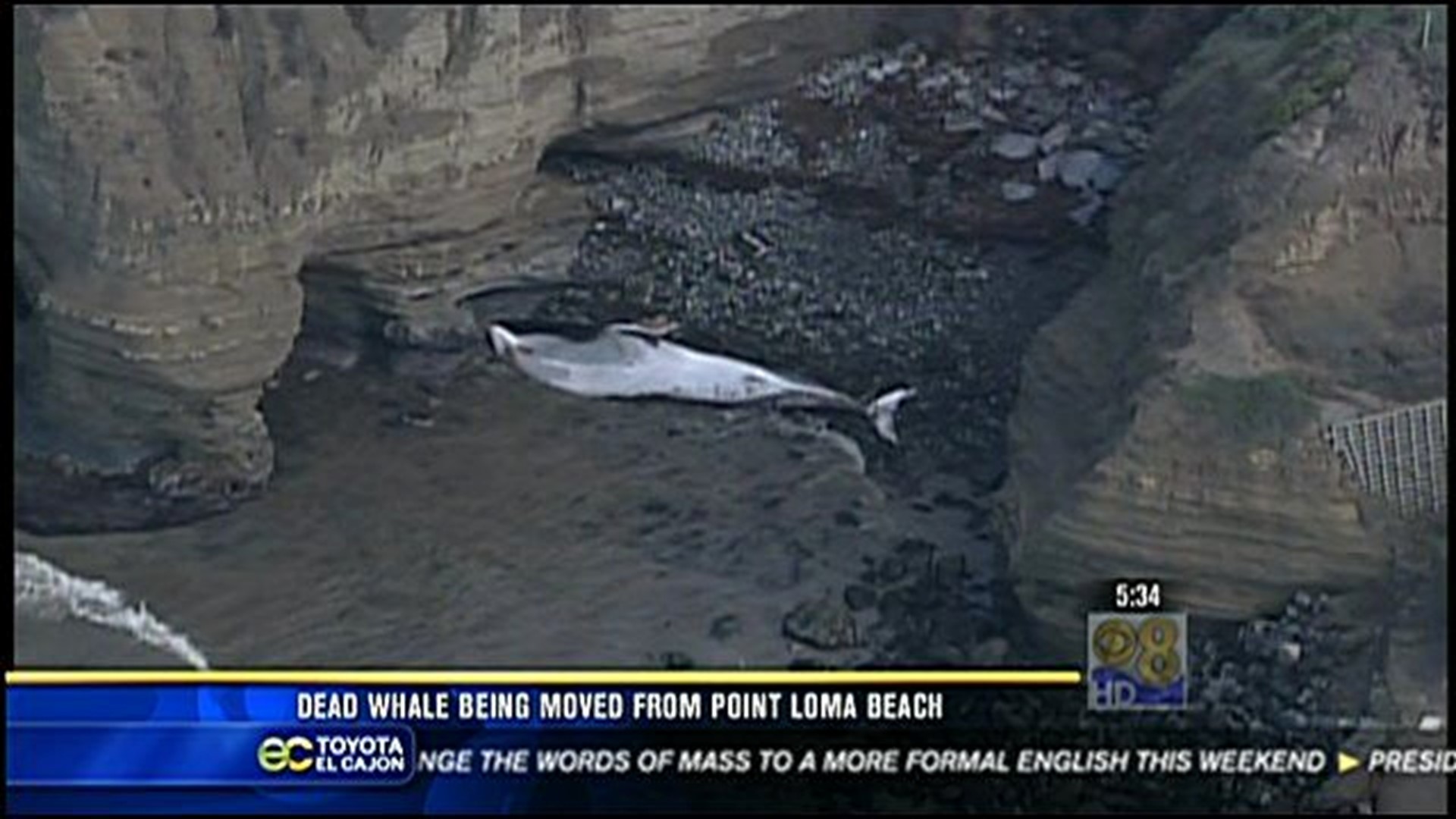SAN DIEGO (CNS) - More than 100 people showed up to the west side of Fiesta Island today to watch whale experts examine a pregnant, 67-foot fin whale that washed up dead near the mouth to San Diego Bay.
San Diego lifeguards towed the carcass about 6.5 miles from near the Point Loma Waste Treatment Plant, where it washed up Saturday, to Fiesta Island in Mission Bay, lifeguard Lt. Greg Buchanan said.
"Everything went according to plan this morning ... (but) I can honestly tell you the lifeguards were struggling with the enormity of the whale," Buchanan said.
Parks and Recreation equipment was used to drag the whale, which could weigh up to a ton per foot, onto the beach, where the examination, which involved removing skin and organs, lasted until about sunset, Buchanan said.
Biologists determined the whale was killed by a ship due to fracturing on its vertebral column, the San Diego Union-Tribune reported.
Officials said the whale had not been dead long when it washed up sometime before 4:30 p.m. Saturday, and a roughly 5-foot fetus was apparently expelled by bloating about two days after the mother died.
The fetus was examined Tuesday, but it was unclear if the baby was ready to be delivered. Buchanan said the fetus was gone this morning, speculating it may have been taken away by the tide.
The whale's remains were fenced off after dark and lifeguards will patrol the area, Buchanan said.
The carcass will remain on the beach until disposed in the open ocean on Friday, an operation funded in part by Richard Branson's Virgin Oceanic organization which will provide a boat equipped to handle the whale's weight, set to dock in Mission Bay Friday, according to Nigella Hillgarth, executive director of the Birch Aquarium at Scripps.
Optimal tides between 7 and 8 a.m. should allow the crew to tow the remains about five miles west of La Jolla, where it would be sunk in about 800 meters of water by adding "several tons" of steel, she said.
The chosen site was near the Scripps Submarine Canyon, and Scripps Institute of Oceanography scientists would be able to study the whale as it decomposes to find out how a new ecosystem forms around it, a process which could last several years, Hillgarth said.
"There are all these organisms that only live on whale carcasses that turn up," Hillgarth said. "Hopefully we'll get really exciting information from that."
Fin whales, found in oceans all over the world, were nicknamed the "greyhound of the sea" because they can swim as fast as 23 mph, are the second-largest species of whale and can grow up to 75 feet and weigh 70 tons, according to the National Oceanic and Atmospheric Administration.
Taking fin whales, prized for their oil, was largely banned by 1976. North Pacific fin whales off the California and Oregon coasts are estimated to number around 2,500.

